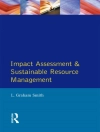This book advocates a fresh approach to planning that anticipates, rather than reacts to, the changes in climate currently in process. Today’s spatial planning procedures rely on historical evidence instead of preparing for factors that by definition lie in the future, yet which are relatively uncontroversial: shortages of water, sea level rise and rises in average temperatures being but three examples. Arguing for more flexibility, the contributors view ‘complexity’ as the key to transforming the way we plan in order to better equip us to face uncertainties about our future environment.
Содержание
Contents: Preface.- Introduction.- 1. The Difficulties to Design for Climate Adaptation.- 2. Turbulence and Uncertainty.- 3. Complexity Theory, Spatial Planning and Adaptation to Climate Change.- 4. Transition and Transformation.- 5. Networks as Driving Force for Climate Design.- 6. Swarm Planning Theory.- 7. Swarm Methodology.- 8. Swarming Landscapes.- 9. Cities as Organisms.- 10. The Best City.- Index.












